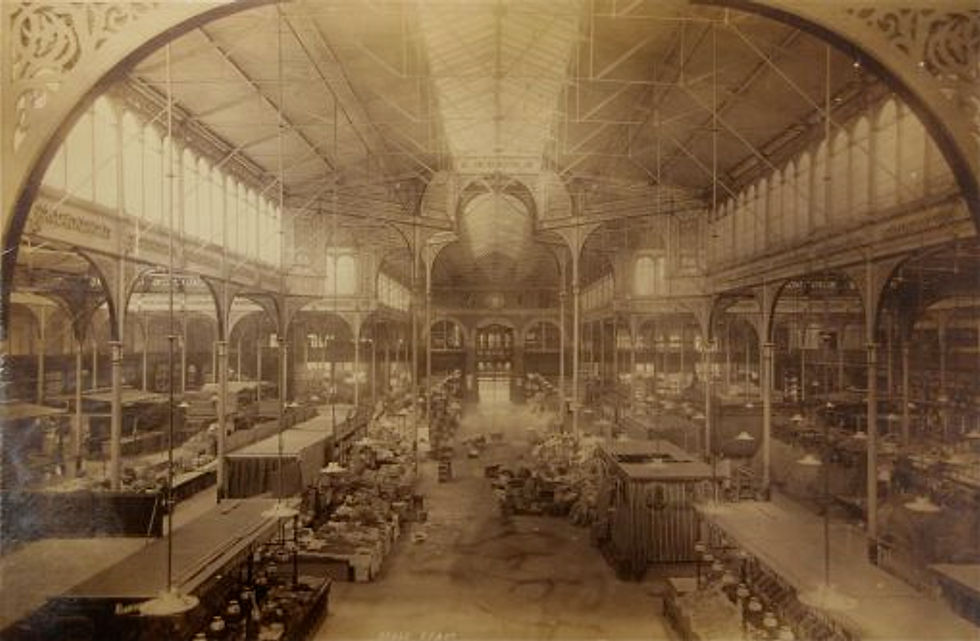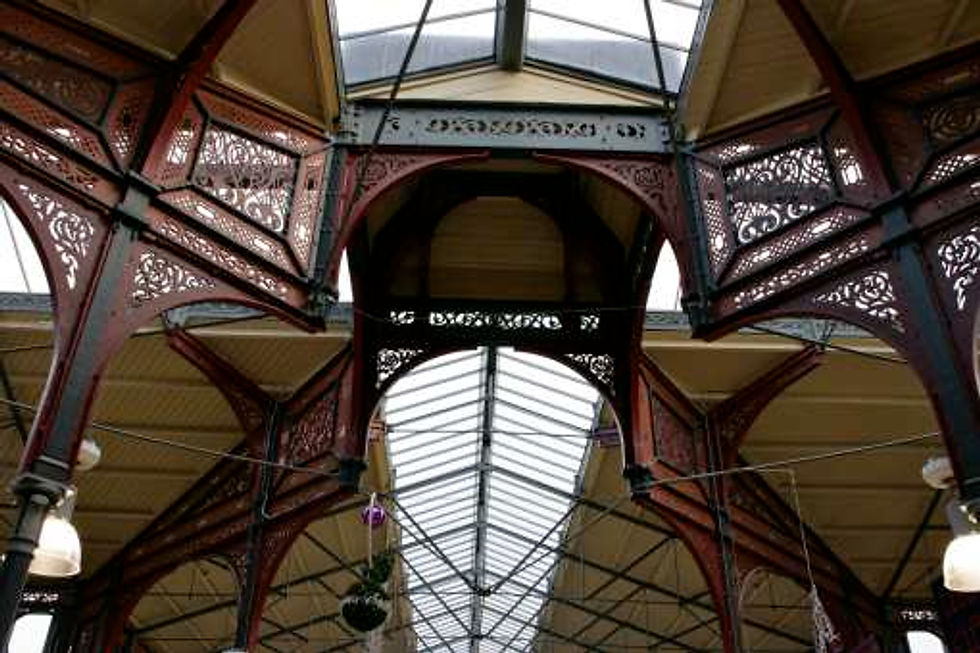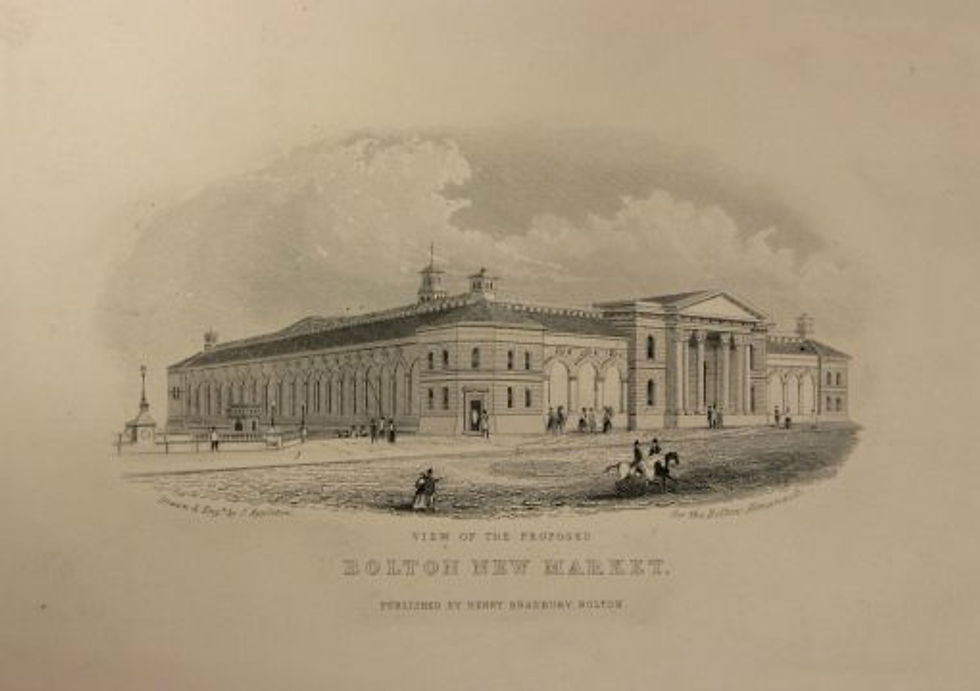Dreams in iron: Bolton’s Victorian market hall
- Paul Dobraszczyk
- Jan 18, 2011
- 3 min read

Photograph of the interior of Bolton's market hall, c.1900
In the nineteenth century, market halls transformed the buying and selling of everyday goods. Previously, markets were usually open-air and acquired a reputation for all manner of insalubrious activities, including food riots and fighting between animals such as bears and dogs. In addition, animals were not only sold at market but also slaughtered on site, leading to complaints by more well-to-do residents about bad smells and insanitary practices that they saw emanating from the market. By the early 19th century the old market had assumed much of the social function of the old fairs – many of which had already been closed because they were regarded as centres of wickedness and immorality. They were seen as promoting bad habits – like heavy drinking, poaching and theft. In short, the market was a poorly controlled space, that for middle-class residents, provided a focus for anxieties about disorder and chaos that they saw played out in these spaces.
The new market halls that were built throughout cities and towns in the Victorian period were promoted against the background of these perceptions. Bolton’s new market hall was a relatively early example of the aspirations of civic authorities in promoting a transformed urban environment of buying and selling. Constructed between 1853 and 1856 and designed by the architect G. T. Robinson, Bolton’s market hall was, for many years, one of Britain’s largest – it measured 218 by 300 feet – larger than any railway station from this period. The interior is divided into two nave-like spaces that cross in the centre: a 50 foot wide nave on the long side and an equal width one on the short side. This created a dramatic focus for an elaborate fountain in the interior, now sadly lost. At the intersection of the two naves is an elaborate cast iron lantern, rendered in a kind of arabesque form of decoration – semicircular arches and richly decorated spandrels that towers 112 feet above the central space.

Interior of Bolton's market hall today

Detail of the ornamental cast iron lantern, Bolton market hall
The principle reason why Bolton got a new market hall was to in order to improve the town’s health by removing food sales from the unsanitary open market and to bring the town’s public market in closer proximity to its growing population. Just as important was the intention to elevate the town’s status by means of a lavish but orderly architectural display. What we get is a monumental Classical exterior, complete with a Corinthian portico with 50ft high columns and taking up an entire block in the town centre. This contrasts sharply with the iron and glass interior and its sense of open space and lightness, which was a necessary aspect of its sanitary requirements: both light and air were considered prerequisites for a clean environment and these could only be achieved in such a large space by using iron and glass.

Commemorative wood engraving of Bolton's market hall, 1856
Bolton’s new market hall was opened on 19 December 1855 to an audience of 18-20,000 people, with 3,000 women of Bolton seated in the galleries. In fact, the whole town was effectively closed for the day and given a public holiday: church bells rang, flags adorned many buildings, while a procession moved through the streets. What all of this demonstrates is that market halls, like Bolton’s, were much more than functional buildings: they were a visual spectacle in themselves, a kind of architectural showpiece for the town. The first visitors described the interior of Bolton’s market hall as reminiscent of ‘the fabled palace of Aladdin, or its more real type, the Moorish palaces of Granada and the East’. In the ornamental ironwork, they perceived an exotic counterpart, one that contributed to the market hall becoming the focus of entertainment on Saturday evenings, but of a more civil kind than bear baiting. Social mixing was encouraged in its new spaces, because they were clean and well controlled by the police. They provided a model in defining morally uplifting urban leisure-cum-commerce. The iron and glass interior – with its rich decoration – was perceived as a fitting location for this new form of entertainment. If the market was now sanitised it was equally glamorised.



Comments